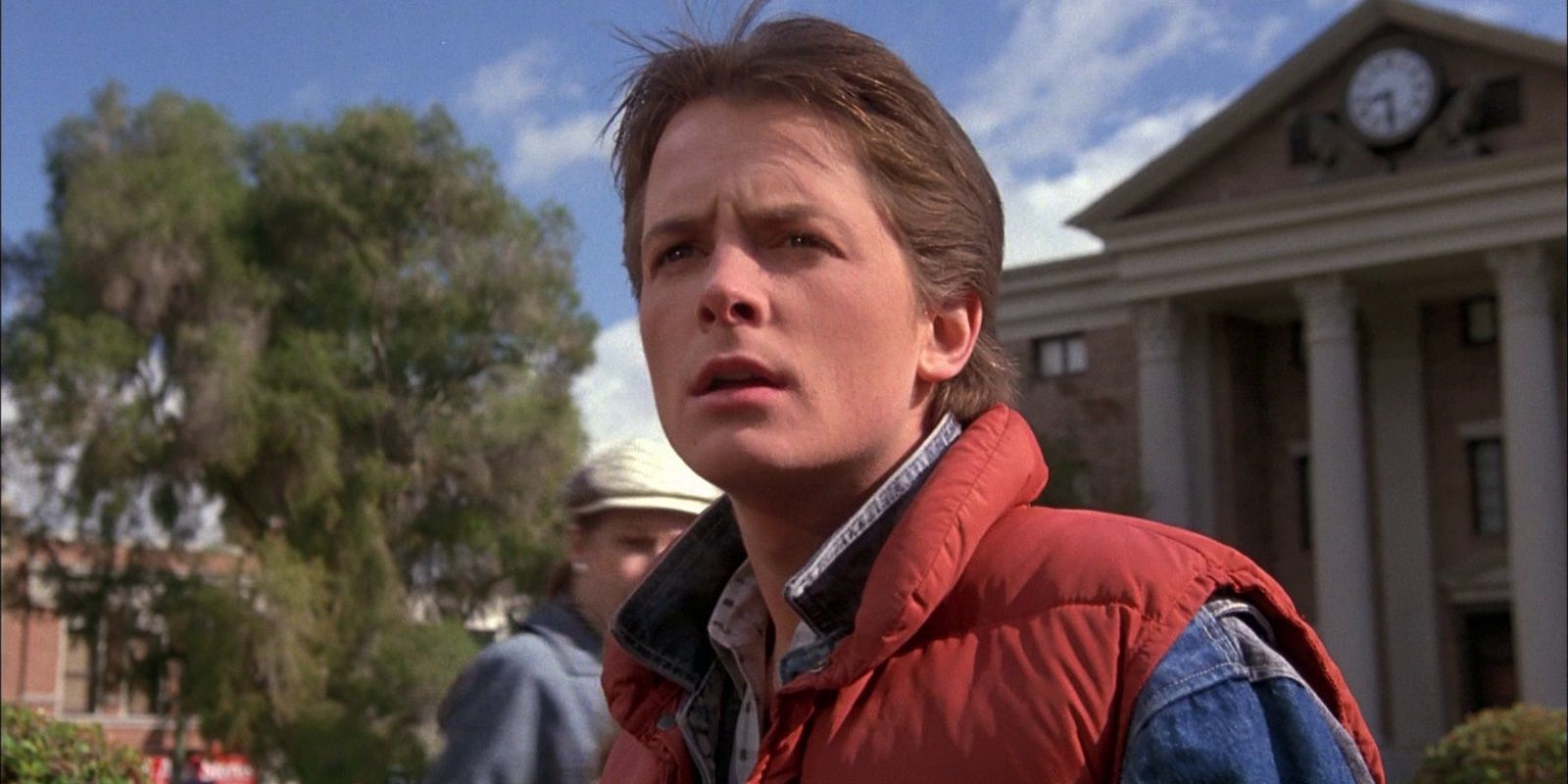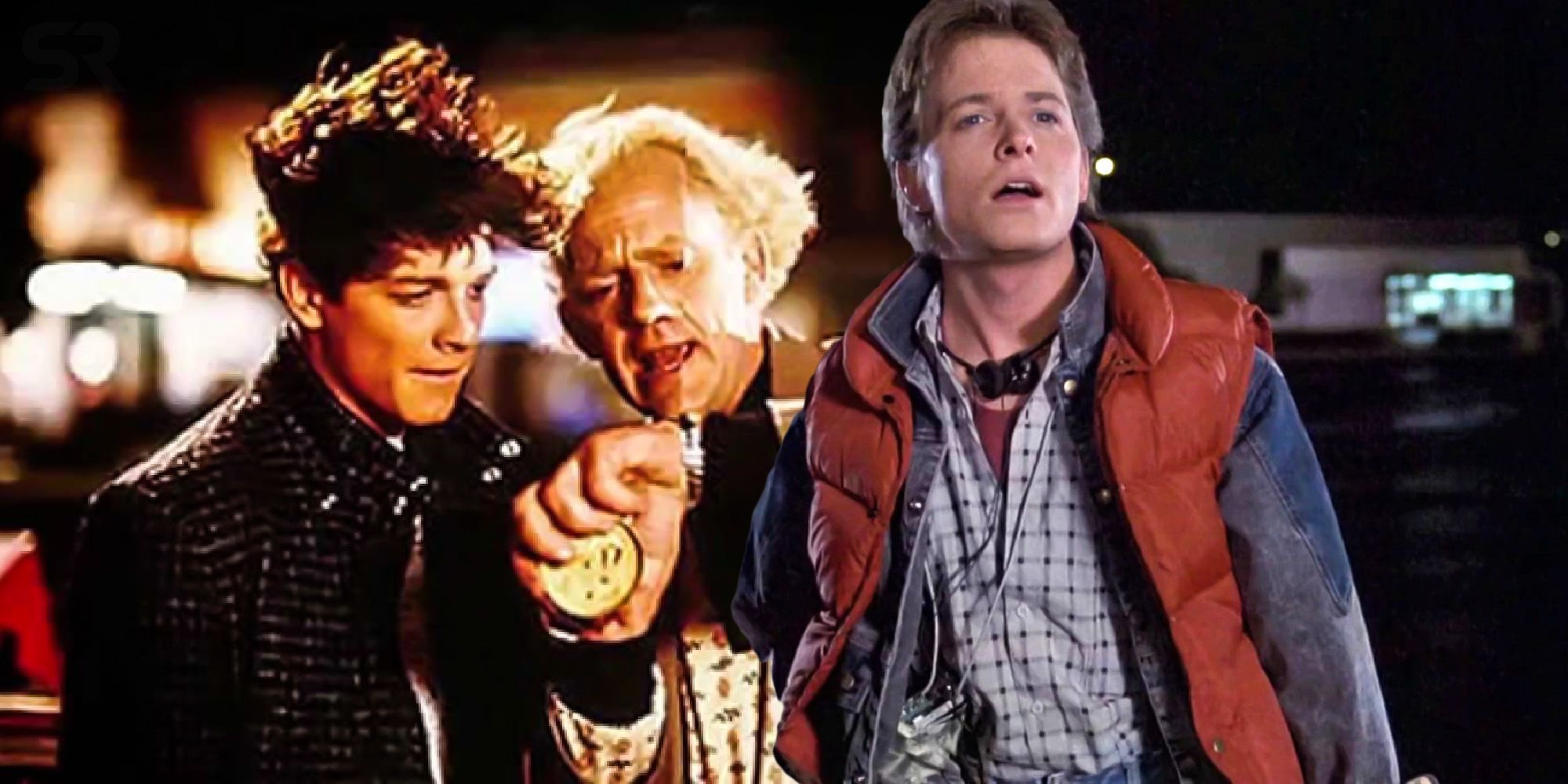
When Michael J. Fox joined Back to the Future, he didn’t just change the story, but he arguably saved the entire movie. The 1985 sci-fi comedy had a notoriously difficult production, including clashes between writer/director Robert Zemeckis and actor Crispin Glover, and rushed digital effects to meet an accelerated release date. Despite these issues, Back to the Future was a huge hit with critics and audiences, spawning two well-received sequels.
Back to the Future follows teenager Marty McFly (Fox) as he journeys back to 1955 in a time-traveling DeLorean created by scientist Doc Brown (Christopher Lloyd). Trapped in the past, he meets younger versions of his parents (Glover and Lea Thompson), and accidentally prevents their falling in love, threatening to erase himself from existence. Marty has since become Fox’s defining role in an impressive career, but he wasn’t always set to play the part.
Eric Stoltz was the original Marty, but it wasn’t long before his overly serious attitude drew concerns from Zemeckis and fellow members of the production. Over six weeks into principal photography, he was eventually replaced with Fox, whom the filmmakers had originally wanted all along. Back to the Future’s development and unusual production is detailed in an episode of the Netflix show The Movies That Made Us, revealing how Fox's casting encouraged the filmmakers to approach the story differently, with reshoots allowing them to see what wasn’t working and make changes for the better.

Zemeckis and co-writer Bob Gale had envisioned Fox in the role due to his funny and charming persona on the sitcom Family Ties, but the show's busy schedule prevented his casting, leading to Stoltz landing the part; however, problems with the actor arose as early as during the cast table read of the script. Stoltz found Back to the Future's ending tragic, rather than the intended light-hearted tone, unable to understand the film's inherent humor. Editor Harry Keramidas states the first week of shooting confirmed Zemeckis’ fear, thanks to Stoltz’s soulless performance. Eventually, the filmmakers decided they'd need to replace the young actor, and they worked out an agreement with Fox that allowed him to continue filming Family Ties.
Once Fox arrived, he apparently made the crew laugh with the delivery of his very first line. Such a stark difference in actors prompted the filmmakers to shift the tone of the film. Stoltz’s Marty was designed to blend in with the 1950s setting, which Gale realized was a missed opportunity to emphasize the fish-out-of-water concept. To accompany Fox's wackier approach, a new wardrobe was devised to make Marty instantly stick out, including bright, bold clothing like his puffy jacket, which 1950s characters humorously mistook for a “life preserver”. Keramidas confirms Back to the Future’s reshoots were of considerable benefit during the editing process: Considering the reshot scenes contained the same structure as Stoltz’s six weeks of footage, the editors were able to save time and quickly assemble the new scenes as well as look for elements that should have made a greater impact. One example was adding sparks to Marty’s skateboard during a chase sequence.
Although changing actors after filming had already begun on Back to the Future was not an ideal situation, the change likely saved the movie. Not only was Michael J. Fox a better fit for Marty McFly, but the change gave the filmmakers a second chance to make the more comedic film they envisioned. Clips from Stoltz’s unreleased footage are intriguing, and it would certainly be fun to compare his full scenes with those of Fox's. However, their expressions alone clearly illustrate how perfectly Fox fits the feel-good, adventurous intentions of Back to the Future.
from ScreenRant - Feed https://ift.tt/3fL7PqZ

No comments: